First Americans
Destination: The Americas
By NIKHIL SWAMINATHAN
Sunday, August 10, 2014
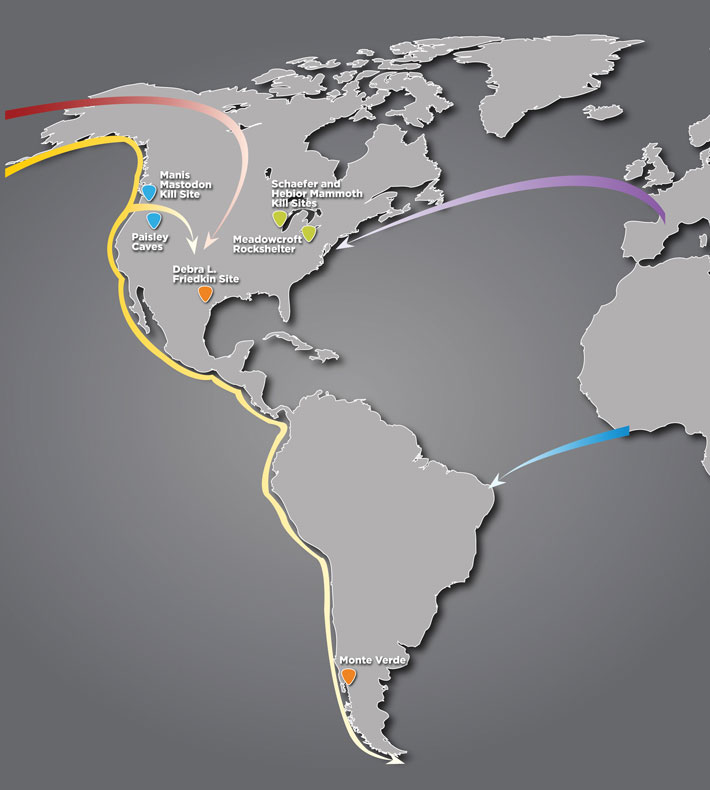 On a Tuesday morning in fall 2013, Mike Collins loaded up his RV and started the 11-hour drive from his home in Austin, Texas, to Santa Fe, New Mexico. Collins was en route to the Paleoamerican Odyssey conference, where he and other researchers would lay out their evidence, gathered from sites throughout North, Central, and South America, as part of the ongoing effort to piece together a picture of how and when humans settled these lands millennia ago. It was the biggest gathering of its kind since 1999.
On a Tuesday morning in fall 2013, Mike Collins loaded up his RV and started the 11-hour drive from his home in Austin, Texas, to Santa Fe, New Mexico. Collins was en route to the Paleoamerican Odyssey conference, where he and other researchers would lay out their evidence, gathered from sites throughout North, Central, and South America, as part of the ongoing effort to piece together a picture of how and when humans settled these lands millennia ago. It was the biggest gathering of its kind since 1999.
Collins, a Texas State University archaeologist, had precious cargo with him in the form of more than 70 stone tools that he’d found during his 15 years of digging at a site in central Texas, roughly midway between Dallas and San Antonio, called Gault. His collection was scrupulously organized into two groups—one that he believes are more than 13,000 years old and a second that he believes were made more recently. The tools—blades, scrapers, and bifaces (typically crafted carefully on both sides)—initially appear to share similarities, as if all are part of the same lineage. But three points in the “newer” collection exhibit striking work—“stemmed” ends and fluting—of a caliber not seen in the other cache. These points, to which the term “beautiful” is often applied, are Clovis points. For the last several decades, in addition to capturing everyone’s attention because of the skill that making them requires, Clovis points have been thought to have been made by the first people to inhabit the Americas. Assemblages of artifacts such as Collins’, painstakingly excavated over years, form an ever-advancing line of research into the population of the Americas.They are a primary means of overturning the long-standing theory that a group of big-game hunter-gatherers crossed over a land bridge from Siberia to Alaska, known as Beringia, making their way south through an ice-free corridor in western Canada around 13,000 years ago. From there, they would have radiated onto the continental United States and beyond, all the way down to Chile.
It has been a compelling narrative. But recent excavations at Gault are part of a growing list of digs contributing new evidence that not only asserts that there were other peoples in the Americas at the same time as those who made Clovis points, but that humans had reached these lands earlier, and possibly by different routes. At the conference, when it was Collins’ turn to speak, he said just that. “By the beginning of the Younger Dryas [a 1,300-year cold snap that began about 12,800 years ago], this was already a fairly crowded archaeological landscape.”
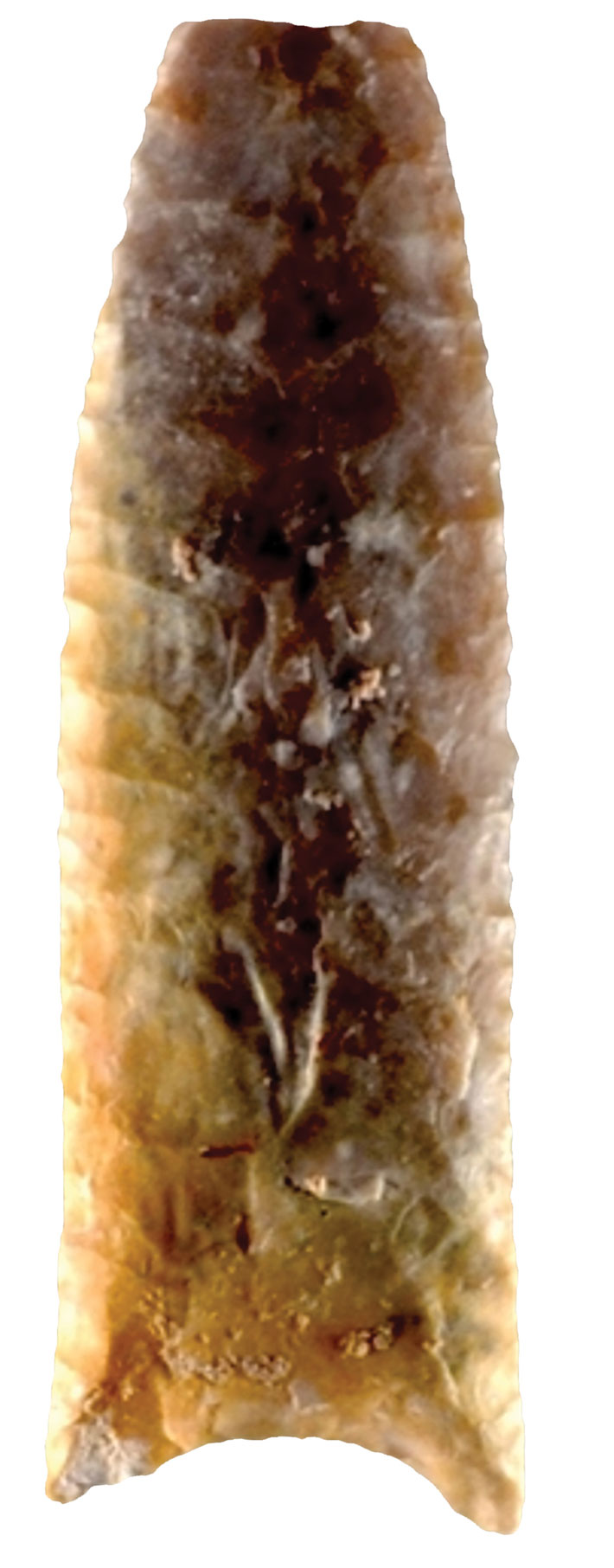 Over the past 15 years, as the consensus in the field has gradually moved beyond the idea that “Clovis came first,” archaeologists have arrived at what Collins calls “an enormous and propitious moment in the study of the peopling of the Americas.” The door has been thrown open to discussions of multiple founding populations, alternate routes, varying toolkits, and even drastically different timeframes for when people might have shown up. “Clovis is still important,” says Mike Waters, director of the Center for the Study of the First Americans at Texas A&M University, “but we have to realize that there were people here before. Now we have to determine how long before Clovis people were here, who they were, what kind of technology they carried, and how they migrated through the continent and settled the empty landscapes.”
Over the past 15 years, as the consensus in the field has gradually moved beyond the idea that “Clovis came first,” archaeologists have arrived at what Collins calls “an enormous and propitious moment in the study of the peopling of the Americas.” The door has been thrown open to discussions of multiple founding populations, alternate routes, varying toolkits, and even drastically different timeframes for when people might have shown up. “Clovis is still important,” says Mike Waters, director of the Center for the Study of the First Americans at Texas A&M University, “but we have to realize that there were people here before. Now we have to determine how long before Clovis people were here, who they were, what kind of technology they carried, and how they migrated through the continent and settled the empty landscapes.”
It’s a new, exciting paradigm in the field that could possibly confirm that the melting pot that the Americas are today is not just a recent development. “We can look at things now in a totally different light,” says Jim Adovasio, director of the Mercyhurst University Archaeological Institute in Erie, Pennsylvania. “The book is wide open for new inscriptions.”
One of the initial clues that people had arrived in the Americas before Clovis came from the southernmost tip of the hemisphere: the Monte Verde site in Chile, 600 miles south of the capital, Santiago. In the late 1970s, an excavation led by Tom Dillehay, currently at Vanderbilt University in Nashville, Tennessee, turned up stone pebble tools and wood and bone artifacts dated at more than 13,000 years old. Remnants of living quarters and three human footprints discovered there also appeared to be from the same period. The revelation would lead to more than two decades of controversy about the integrity of the site, until, in 1997, a group of nine prominent archaeologists traveled to Monte Verde to assess its legitimacy. After sitting through a series of presentations—from, among others, Dillehay, Collins, who spoke about the stone tools discovered there, and Adovasio, who had studied the ropes used on a tent structure that had been found—and taking a visit to the site, the panel was satisfied that the site contained evidence of occupation dating back 14,500 years, some 1,500 years before the date of the earliest Clovis site in the Americas.
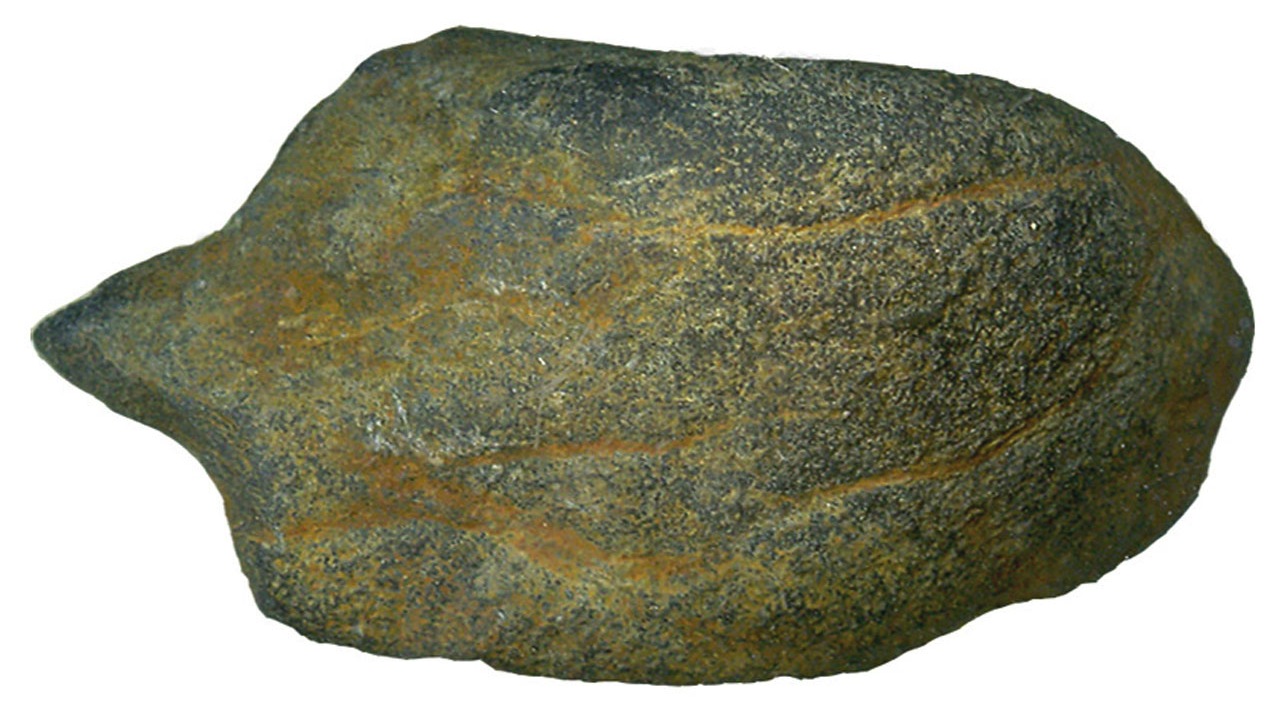 Today, the archaeological community has largely come to accept that people were living at Monte Verde before the emergence of Clovis technology. Adovasio, whose excavations at Meadowcroft Rockshelter in the 1970s uncovered artifacts indicating that people were living in western Pennsylvania between 14,000 and 16,000 years ago, says that now, looking back, he realizes that he and Dillehay vastly underestimated how long it would take for their findings to be accepted. And the work continues. At the Santa Fe conference, Dillehay offered a presentation on Monte Verde and one on a site in northern Peru called Huaca Prieta, where he’s found charcoal and animal bones along with stone tools dating back as far as 14,200 years.
Today, the archaeological community has largely come to accept that people were living at Monte Verde before the emergence of Clovis technology. Adovasio, whose excavations at Meadowcroft Rockshelter in the 1970s uncovered artifacts indicating that people were living in western Pennsylvania between 14,000 and 16,000 years ago, says that now, looking back, he realizes that he and Dillehay vastly underestimated how long it would take for their findings to be accepted. And the work continues. At the Santa Fe conference, Dillehay offered a presentation on Monte Verde and one on a site in northern Peru called Huaca Prieta, where he’s found charcoal and animal bones along with stone tools dating back as far as 14,200 years.
As things now stand, the work of this group of archaeologists and many others is continuing to offer up enough evidence to keep researchers busy for the next several decades. Some of the upwards of 50 sites already being studied will have their findings permanently written into the story of the peopling of the Americas. Take, for instance, Paisley Caves in southern Oregon. There, archaeologists discovered fossilized human dung, called coprolites, and a few pieces of a stone toolkit that looks nothing like Clovis, but is, at the least, contemporary with it.
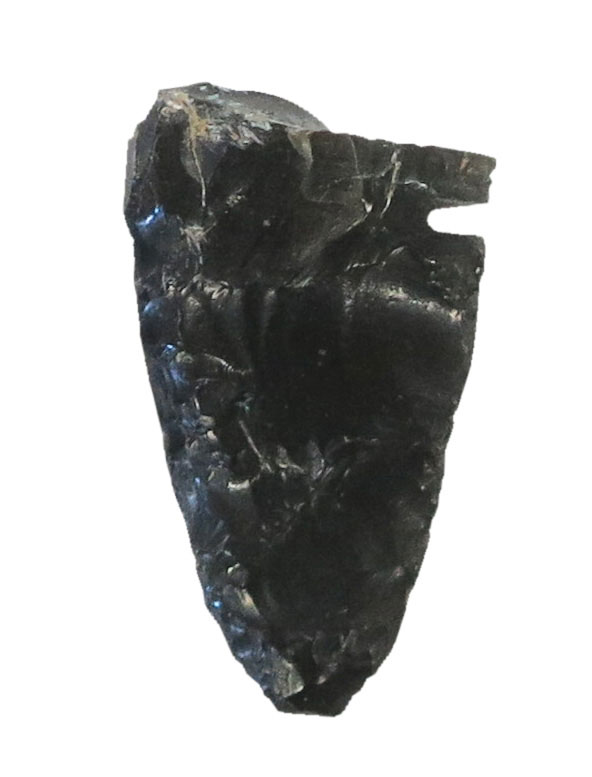 The earliest dates at Paisley are 14,300 years ago. Based on analysis of the coprolites found there, Dennis Jenkins, the University of Oregon archaeologist who led the excavation, has been able to determine that the people there were gathering and consuming aromatic roots, for which they would have needed special knowledge that would have developed over time. “These guys aren’t the first people to come over the hills, see the caves, and go in there and relieve themselves,” he explains.
The earliest dates at Paisley are 14,300 years ago. Based on analysis of the coprolites found there, Dennis Jenkins, the University of Oregon archaeologist who led the excavation, has been able to determine that the people there were gathering and consuming aromatic roots, for which they would have needed special knowledge that would have developed over time. “These guys aren’t the first people to come over the hills, see the caves, and go in there and relieve themselves,” he explains.
In addition, Paisley Caves provokes a line of questioning having to do with the routes that early people might have taken to reach the Americas. There are dissimilarities between the tools found at Paisley and Clovis points. In addition, people in the area of Paisley Caves were there before 14,300 years ago. Rather than these people being part of the same group whose descendants would eventually make Clovis tools, the inhabitants at Paisley were, instead, a distinct and earlier pulse of migrants. That raises the question of whether all of the earliest humans in the New World actually entered via the ice-free corridor. Jenkins, in fact, supports the hypothesis that the original immigrants to America boated from island to island along the northern rim of the Pacific, eventually making it from Beringia to the Pacific Northwest around 15,000 years ago.
Some of the coastal travelers may have made their way inland to what is today northern California, following the Klamath River northeast to Paisley Caves. Others, Dillehay suspects, might eventually have followed the coastline all the way to Monte Verde. “After the initial entry,” he says, “it is highly likely that this is one large tossed salad, with multiple migrations from multiple places moving around and retracing, with some on a straight line south.”
Other archaeologists working in South America, however, have a different idea. Stone tools found at the Toca da Tira Peia rockshelter, in Serra da Capivara National Park in central Brazil, have been dated to 22,000 years ago. At Pedro Furada, another rockshelter in the same park, excavators say they’ve found tools and fire pits dating back 50,000 years. If either claim is confirmed, it would suggest that the first Americans arrived in the southern hemisphere, possibly via boat from west Africa, where the Atlantic is at its shortest width, around 1,600 nautical miles.
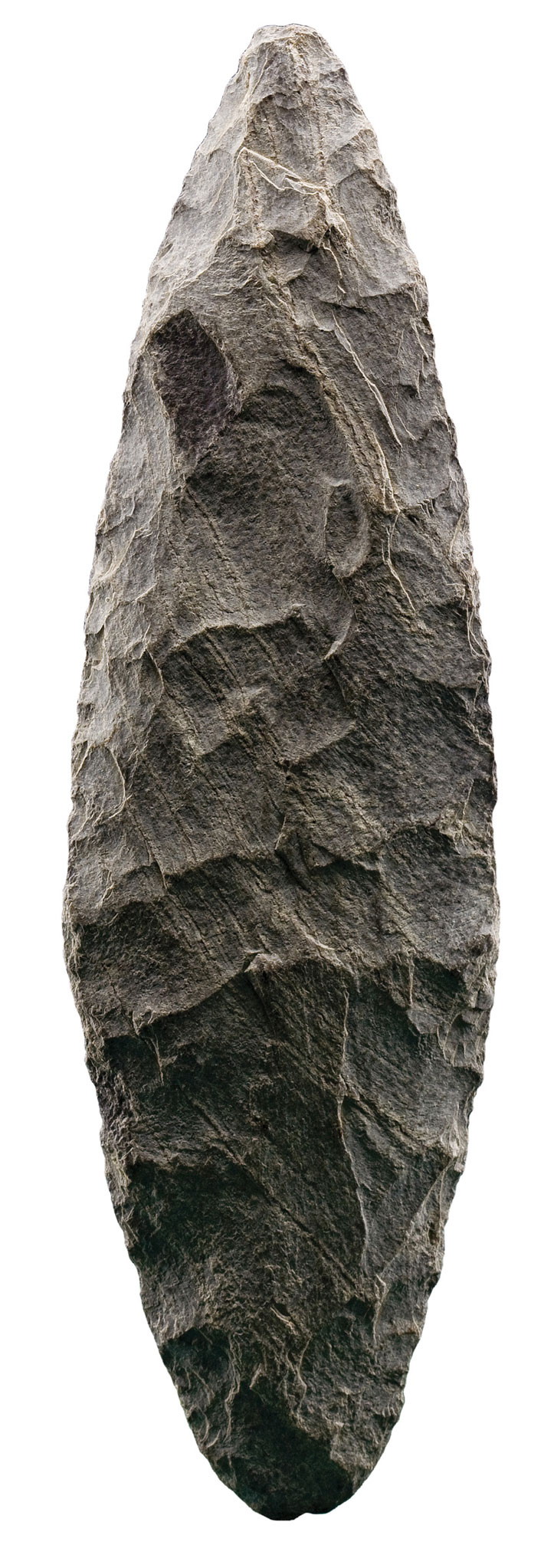
If there’s a new buzzword in the archaeological study of the peopling of the Americas, it is “boats.” Part of reimagining the settling of the New World is to stop considering traveling by land as the only way people could have arrived there. “We so radically underestimated the roles of boats and water transports for all time horizons, not just the more recent past,” Adovasio explains. After all, roughly 50,000 years ago aboriginal Australians completed the trip from East Africa to Oceania. More specifically, they got there via Asia, “and they sure didn’t walk,” says Collins. Evidence shows—and this is an important understanding to factor in when considering all of these migrations—that the “trip” took them 20,000 years.
Nonetheless, the migration proposal that arouses possibly the highest degree of contention relies on boats. It suggests that the earliest travelers to the New World made their way more than 20,000 years ago from what is now the west coast of France and northern Spain. They went north along the coast to what is now southwestern Ireland and then west along the edge of an icecap in the northern Atlantic Ocean until they reached North America at the Grand Banks of Newfoundland. They would then have made their way south. This argument rests on the discovery of laurel-leaf biface points that strongly resemble tools used by the Solutrean people, who lived in France and the Iberian peninsula from about 22,000 to 17,000 years ago. They have been found in several locales including the Cinmar site off the coast of the Delmarva Peninsula near the entrance to Chesapeake Bay. The archaeologists who support this theory stress the similarity between Solutrean and Clovis tools. They consider the Clovis point the direct descendant of the laurel-leaf tool.
Not all researchers are willing to embrace what is commonly termed the Solutrean hypothesis. Waters, for instance, doesn’t buy it. “I think there are just too many problems,” he says, referring to, among other criticisms, the lack of a systematic excavation at any of the sites where the points have been found. Collins, however, who is open to hearing out the vast majority of pre-Clovis claims, finds the Solutrean hypothesis very compelling. “I think maritime adaptations happened in both oceans, and I think it happened first in the Atlantic and then the Pacific,” he explains. “You have people peopling the Americas from both directions, and they eventually meet in the middle.”
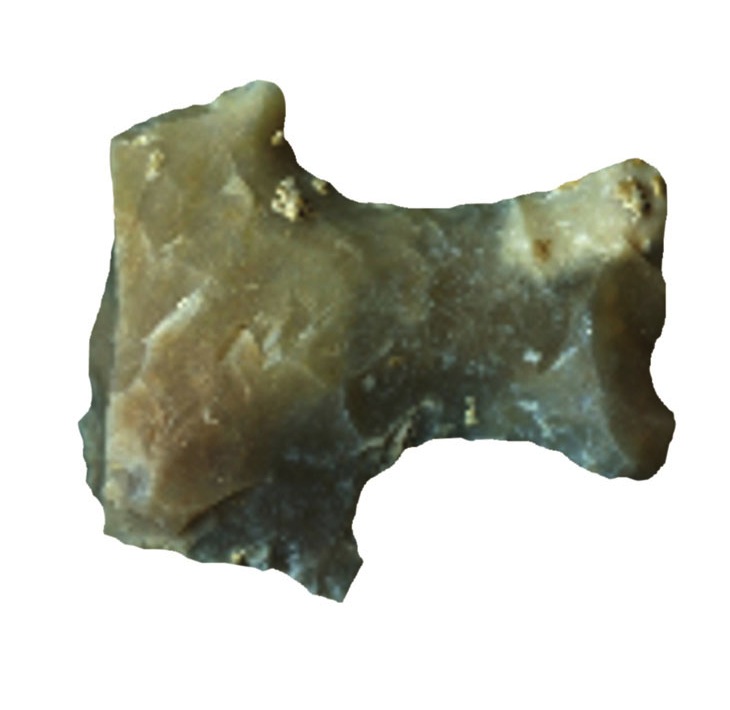 The work proceeds from site to site. While Waters tends to support the validity of a total of 10 “before-Clovis” sites in the Americas, Collins is considering the possibility that there are already around 40 such sites. “When you look at the big picture, it looks like there’s an extraordinarily complex early record out there,” says Collins, who is already looking for patterns among sites. “I think by 14,000 years ago there were a lot of people here.”
The work proceeds from site to site. While Waters tends to support the validity of a total of 10 “before-Clovis” sites in the Americas, Collins is considering the possibility that there are already around 40 such sites. “When you look at the big picture, it looks like there’s an extraordinarily complex early record out there,” says Collins, who is already looking for patterns among sites. “I think by 14,000 years ago there were a lot of people here.”
Monte Verde
By NIKHIL SWAMINATHAN
Monday, August 11, 2014
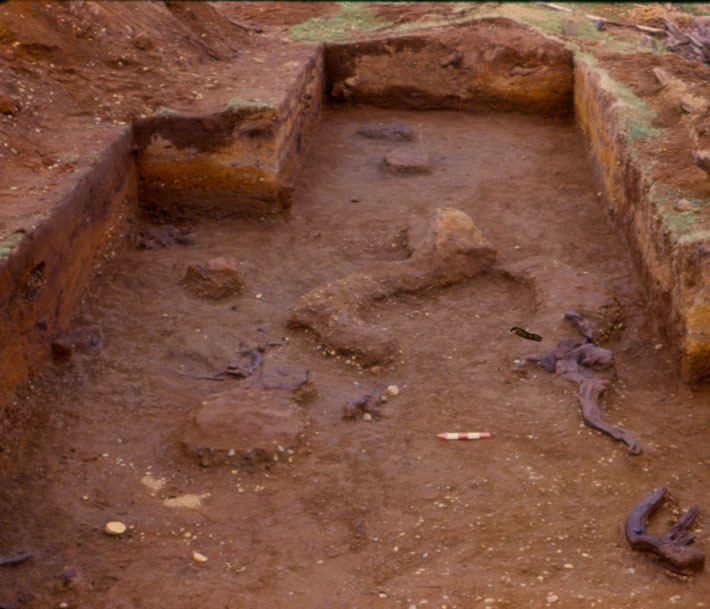
When local Chilean lumbermen noticed large animal bones on the eroding margins of a creek, they had no idea that they had stumbled onto one of the oldest known examples of human occupation in the Americas. Over a decade of primary excavations at Monte Verde, Vanderbilt University archaeologist Tom Dillehay, then at Austral University of Chile, found the remains of a year-round habitation on what thousands of years ago was an open sandbar, preserved under what had become a peat bog.
The evidence included a 60-foot-long structure, probably tentlike, that may have housed up to 30 people. Support posts within the construction could possibly have demarcated individual living areas. In front of the residence were the remains of two hearths. Nearby, among preserved meat and firewood, were three human footprints still visible in the hardened clay. Artifacts found in the area include wooden slabs (for grinding), the burned tip of a long lance, rudimentary pebble tools used for scraping and cutting, and biface fragments. Wood charcoal from the hearths, when tested, returned an average date of slightly more than 14,500 years ago.
Dillehay has continued to work at the site, showing that the people of Monte Verde were not just big-game hunters. They also appeared to have used 10 different species of seaweed from the Pacific coast—a little more than 50 miles west of the site—for both food and medicine.
In another section of the site, at a level below the spot where the tentlike living quarters sit, Dillehay found 26 stones. At least six appear to be man-made artifacts, and one has burn marks. There are also burned patches of ground, but he is hesitant to call these hearths. Dates returned from this evidence suggest that there may have been people at Monte Verde 15,000 years earlier than previously believed. But Dillehay himself says, “I don’t yet see any reason to believe people were in the Americas and that far south 30,000 years ago.”
Paisley Caves
Monday, August 11, 2014

Stone tools and fire features are always great indicators of human activity at an archaeological site. And human bones are the best evidence excavators can hope to find. But humans also leave behind coprolites, or fossilized feces. Thanks to the extremely dry environment inside Oregon’s Paisley Caves, University of Oregon archaeologist Dennis Jenkins and his team came across five human droppings that dated to older than 14,000 years over the course of nine years of digging there.
In addition, they also found three points that Jenkins believes belong to what is known as the Western Stemmed tradition. Unlike Clovis points, which have a signature notch at their base so that wooden spears can be attached, these have constricted bases. They have also clearly been struck from smaller pieces of stone than the typical Clovis counterpart. Two human coprolites dated to just over 13,000 years ago were found within eight inches of one of the points. At the very least, this evidence suggests that there was a parallel occupation of the continental United States by both the Clovis people and a second group who made different types of tools.
Evidence of baskets and rope, plant fibers, wooden artifacts, and animal bones were also found at the caves. Pollen and other plant minerals extracted from the coprolites suggest that people came to the site in the spring and early summer. They also provide evidence that the people in the caves ate everything from edible roots to bison, horse, and even animals as big as mastodon.
Jenkins, for his part, thinks Paisley Caves were not a destination location. “There is very little debitage [residue from production] from stone tools over time,” he explains. “The archaeology suggests this is a place where people are passing by—something, weather or resources nearby, or the time of day, makes you stop in.”
Meadowcroft Rockshelter
By NIKHIL SWAMINATHAN
Monday, August 11, 2014
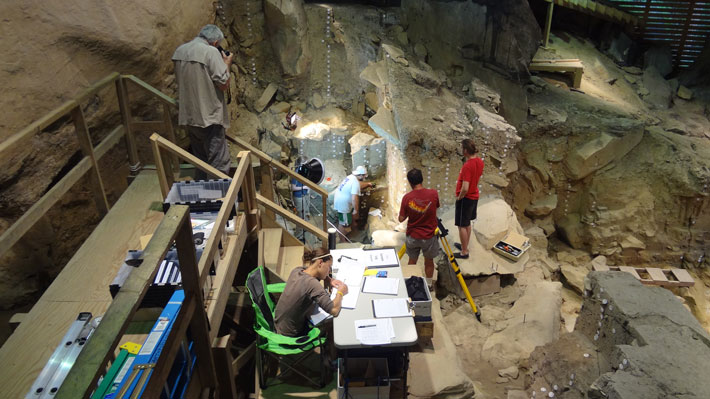
According to Mercyhurst University archaeologist Jim Adovasio, Meadowcroft Rockshelter, where he began working in the mid-1970s, holds the distinction of being the longest-occupied site in the Americas. People began camping there episodically as early as 16,000 years ago and continued visiting the shelter until the thirteenth century A.D. Adovasio terms it “a late-Pleistocene Holiday Inn,” adding, “it has never flooded, it’s high and dry, the overhang, prehistorically, was fairly large, and it’s well ventilated.” Several feet below the shelter’s opening is Cross Creek, where those setting up camp could easily have access to freshwater.
A roof collapse 13,000 to 14,000 years ago trapped beneath it a wealth of material uncovered in excavations. Adovasio says roughly 700 pieces of stone, some of them tools made from jasper and chert were recovered from the deepest units at the site. There were 50 complete tools or large enough fragments to be recognizable implements. There were prismatic blades and straight-based points with lance-like tips. As opposed to the fluted ridges found on Clovis points, these were largely smooth on the sides.
More than 50 sequential dates were taken, primarily from charcoal found in hearths, to arrive at ages that Adovasio says are between 14,000 and 16,000 years old. He was confronted with criticism related to a lack of ancient plant and animal remains at the site, which some researchers say make it difficult to know what the people at Meadowcroft subsisted on. Adovasio, for his part, says that they were likely “broad-spectrum foragers,” relying on a combination of meat and plants for sustenance. Other critics hypothesize that there was natural contamination of his radiocarbon dates, for instance, from water leaching coal from below the archaeological deposits. Adovasio has refuted those concerns. “Minimally, if you took only the very youngest acceptable dates,” he says, “then people were there at the same time as Clovis folks, but with a different technology.”
Debra L. Friedkin Site
By NIKHIL SWAMINATHAN
Monday, August 11, 2014
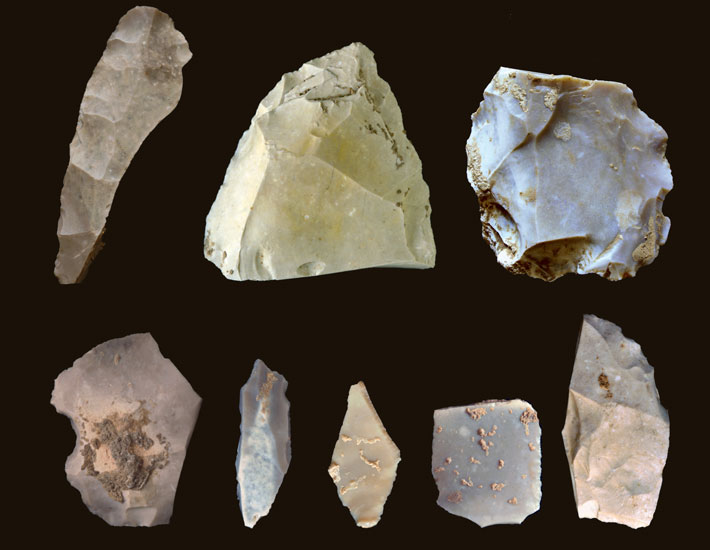
The Debra L. Friedkin site sits on a terrace a few yards north of Texas’ Buttermilk Creek. In clay deposits less than five feet deep is an impressive chronology of tools with the most recent pieces dating to the Late Prehistoric, at 1,800 years old, and the oldest, at its bottom, possibly dating to 15,500 years ago. People had apparently been coming here for millennia to camp and hunt near the banks of the stream. One inch below a layer of clay that held Clovis points were an additional eight vertical inches of deposits holding a collection made up of 16,000 chert pieces—scraps from tool production—including 60 identifiable tools such as bifaces, scrapers, blades, and a flat, circular core from which these sorts of utensils were struck.
Because water had carried away any nearby organic material that could be used to get radiocarbon dates, Texas A&M University archaeologist Mike Waters had to rely on a technique called optically stimulated luminescence, which estimates the last time a quartz grain has been exposed to sunlight. In the five feet of clay, Waters’ team got a column of 49 dates in chronological order as they moved down into the deposits.
The Friedkin toolkit is bolstered by that found at its neighbor, the Gault site, less than 300 yards upstream, where similar tools have been found. While finds older than Clovis at Gault have yet to be published, there’s general consensus that it is a legitimate before-Clovis site. Waters calls Gault a workshop in which ancient people crafted tools. “Where I am, at Friedkin, that’s the activity and camping area. That’s the way it is in Clovis—you’ve got the big workshops and then the activity area,” he explains, where the tools were used to process carcasses and plants. As with the people at Meadowcroft, Paisley Caves, and Monte Verde, those who were at Friedkin likely foraged for food and ate a number of animals, large and small. The Friedkin toolkit has strong similarities to Clovis technology but no actual Clovis points. As a result, Waters says, many have taken to calling it “proto-Clovis.”
Advertisement
Advertisement
IN THIS ISSUE
Advertisement

Recent Issues
-
 May/June 2024
May/June 2024
-
 March/April 2024
March/April 2024
-
 January/February 2024
January/February 2024
-
 November/December 2023
November/December 2023
-
 September/October 2023
September/October 2023
-
 July/August 2023
July/August 2023
-
 May/June 2023
May/June 2023
-
 March/April 2023
March/April 2023
-
 January/February 2023
January/February 2023
-
 November/December 2022
November/December 2022
-
 September/October 2022
September/October 2022
-
 July/August 2022
July/August 2022
-
 May/June 2022
May/June 2022
-
 March/April 2022
March/April 2022
-
 January/February 2022
January/February 2022
-
 November/December 2021
November/December 2021
-
 September/October 2021
September/October 2021
-
 July/August 2021
July/August 2021
-
 May/June 2021
May/June 2021
-
 March/April 2021
March/April 2021
-
 January/February 2021
January/February 2021
-
 November/December 2020
November/December 2020
-
 September/October 2020
September/October 2020
-
 July/August 2020
July/August 2020
-
 May/June 2020
May/June 2020
-
 March/April 2020
March/April 2020
-
 January/February 2020
January/February 2020
-
 November/December 2019
November/December 2019
-
 September/October 2019
September/October 2019
-
 July/August 2019
July/August 2019
-
 May/June 2019
May/June 2019
-
 March/April 2019
March/April 2019
-
 January/February 2019
January/February 2019
-
 November/December 2018
November/December 2018
-
 September/October 2018
September/October 2018
-
 July/August 2018
July/August 2018
-
 May/June 2018
May/June 2018
-
 March/April 2018
March/April 2018
-
 January/February 2018
January/February 2018
-
 November/December 2017
November/December 2017
-
 September/October 2017
September/October 2017
-
 July/August 2017
July/August 2017
-
 May/June 2017
May/June 2017
-
 March/April 2017
March/April 2017
-
 January/February 2017
January/February 2017
-
 November/December 2016
November/December 2016
-
 September/October 2016
September/October 2016
-
 July/August 2016
July/August 2016
-
 May/June 2016
May/June 2016
-
 March/April 2016
March/April 2016
-
 January/February 2016
January/February 2016
-
 November/December 2015
November/December 2015
-
 September/October 2015
September/October 2015
-
 July/August 2015
July/August 2015
-
 May/June 2015
May/June 2015
-
 March/April 2015
March/April 2015
-
 January/February 2015
January/February 2015
-
 November/December 2014
November/December 2014
-
 September/October 2014
September/October 2014
-
 July/August 2014
July/August 2014
-
 May/June 2014
May/June 2014
-
 March/April 2014
March/April 2014
-
 January/February 2014
January/February 2014
-
 November/December 2013
November/December 2013
-
 September/October 2013
September/October 2013
-
 July/August 2013
July/August 2013
-
 May/June 2013
May/June 2013
-
 March/April 2013
March/April 2013
-
 January/February 2013
January/February 2013
-
 November/December 2012
November/December 2012
-
 September/October 2012
September/October 2012
-
 July/August 2012
July/August 2012
-
 May/June 2012
May/June 2012
-
 March/April 2012
March/April 2012
-
 January/February 2012
January/February 2012
-
 November/December 2011
November/December 2011
-
 September/October 2011
September/October 2011
-
 July/August 2011
July/August 2011
-
 May/June 2011
May/June 2011
-
 March/April 2011
March/April 2011
-
 January/February 2011
January/February 2011
Advertisement






